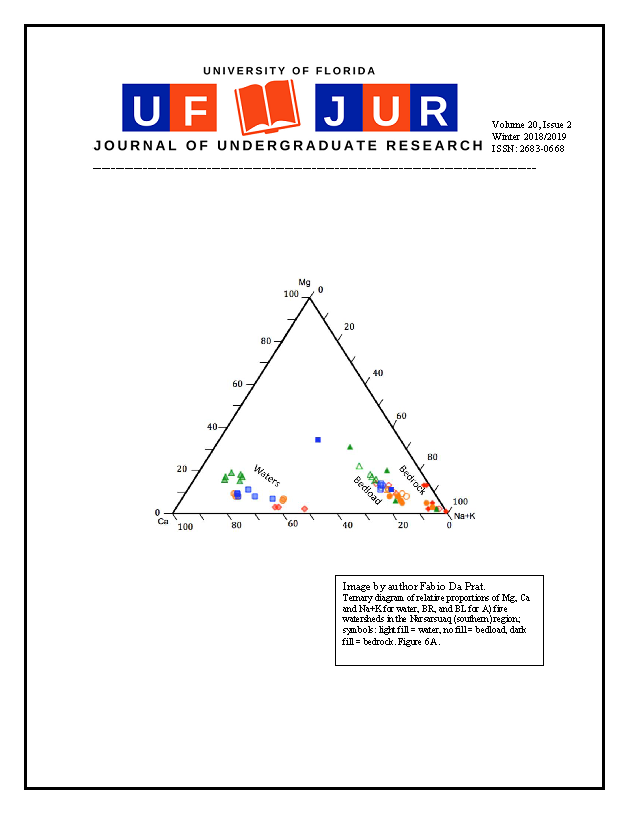Association between Asthma Medication Adherence and Patient-Provider Collaboration
DOI:
https://doi.org/10.32473/ufjur.v20i2.106186Abstract
Asthma is a significant pediatric public health concern, with 8.3% of children in the U.S. diagnosed with asthma. Pediatric asthma morbidity is consistently linked to medication non-adherence. Medication adherence has been shown to be influenced by patient-provider interactions. The aim of this study is to examine the relationship between medication adherence, using both objective and subjective reports, to patient-provider collaboration in adolescents with poorly controlled asthma. Thirty adolescents ages 12 to 15 were interviewed along with their caregivers using the Family Asthma Management System Scale (FAMSS). Adherence data were collected via pharmacy refill reports and scores on the FAMSS adherence rating subscale. Patient-provider collaboration was assessed using the corresponding subscale from the FAMSS interview. Pearson correlations were conducted to examine the relationships between both measures of adherence and patient-provider collaboration. There was no significant association between adherence measured with pharmacy refills and patient-provider collaboration (r = .27, p = .176). A significant correlation was found between medication adherence, as measured by the FAMSS ratings, and patient-provider collaboration (r = .53, p = .003). These findings suggest that more collaborative patient-provider relationships may be linked to higher medication adherence among adolescents with poorly controlled asthma.
References
Akinbami, L. J., Simon, A. E., & Rossen, L. M. (2015). Changing trends in asthma prevalence among children. Pediatrics, peds-2015.
Bauman, L. J., Wright, E., Leickly, F. E., Crain, E., Kruszon-Moran, D., Wade, S. L., & Visness, C. M. (2002). Relationship of adherence to pediatric asthma morbidity among inner-city children. Pediatrics, 110(1), e6-e6.
Brown, M. T., & Bussell, J. K. (2011, April). Medication adherence: WHO cares?. In Mayo Clinic Proceedings (Vol. 86, No. 4, pp. 304-314). Elsevier.
Bruzzese, J. M., Bonner, S., Vincent, E. J., Sheares, B. J., Mellins, R. B., Levison, M. J., ... & Evans, D. (2004). Asthma education: the adolescent experience. Patient Education and Counseling, 55(3), 396-406.
Drotar, D., & Bonner, M. S. (2009). Influences on adherence to pediatric asthma treatment: a review of correlates and predictors. Journal of Developmental & Behavioral Pediatrics, 30(6), 574-582..
Hess, L. M., Raebel, M. A., Conner, D. A., & Malone, D. C. (2006). Measurement of adherence in pharmacy administrative databases: a proposal for standard definitions and preferred measures. Annals of Pharmacotherapy, 40(7-8), 1280-1288.
Jones, M. A. (2008). Asthma self-management patient education. Respiratory care, 53(6), 778-786.
Krishnan, J. A., Bender, B. G., Wamboldt, F. S., Szefler, S. J., Adkinson, N. F., Zeiger, R. S., … & Adherence Ancillary Study Group. (2012). Adherence to inhaled corticosteroids: an ancillary study of the Childhood Asthma Management Program clinical trial. Journal of Allergy and Clinical Immunology, 129(1), 112-118.
Lehmann, A., Aslani, P., Ahmed, R., Celio, J., Gauchet, A., Bedouch, P., ... & Schneider, M. P. (2014). Assessing medication adherence: options to consider. International journal of clinical pharmacy, 36(1), 55-69.
Liu, A. H., Zeiger, R., Sorkness, C., Mahr, T., Ostrom, N., Burgess, S., ... & Manjunath, R. (2007). Development and cross-sectional validation of the Childhood Asthma Control Test. Journal of Allergy and Clinical Immunology, 119(4), 817-825.
McQuaid, E. L., Kopel, S. J., Klein, R. B., & Fritz, G. K. (2003). Medication adherence in pediatric asthma: reasoning, responsibility, and behavior. Journal of pediatric psychology, 28(5), 323-333.
McQuaid EL, Nassau JH, Fritz GK, Klein R: Sharing family responsibility for asthma management tasks. Paper presented the Sixth Florida Conference on Child Health Psychology, Gainesville, Florida, April, 1997.
McQuaid, E. L., Walders, N., Kopel, S. J., Fritz, G. K., & Klinnert, M. D. (2005). Pediatric asthma management in the family context: The family asthma management system scale. Journal of Pediatric Psychology, 30(6), 492-502.
Modi, A. C., & Quittner, A. L. (2006). Barriers to treatment adherence for children with cystic fibrosis and asthma: what gets in the way?. Journal of pediatric psychology, 31(8), 846-858.
National Asthma Education and Prevention Program (NAEPP) Expert Panel Report 3 (EPR-3): Guidelines for the Diagnosis and Management of Asthma-Summary Report 2007. J Allergy Clin Immunol. 2007;120: S94–138.
Randolph, C., & Fraser, B. (1999). Stressors and concerns in teen asthma. Current problems in pediatrics, 29(3), 82-93.
Rhee, H., Belyea, M. J., Ciurzynski, S., & Brasch, J. (2009). Barriers to asthma self‐management in adolescents: Relationships to psychosocial factors. Pediatric pulmonology, 44(2), 183-191.
Sherman, J., Hutson, A., Baumstein, S., & Hendeles, L. (2000). Telephoning the patient’s pharmacy to assess adherence with asthma medications by measuring refill rate for prescriptions. The Journal of pediatrics, 136(4), 532-536.
Sleath, B., Carpenter, D. M., Slota, C., Williams, D., Tudor, G., Yeatts, K., ... & Ayala, G. X. (2012). Communication during pediatric asthma visits and self-reported asthma medication adherence. Pediatrics, 130(4), 627-633.
Taylor, D. R., Bateman, E. D., Boulet, L. P., Boushey, H. A., Busse, W. W., Casale, T. B., ... & Kerstjens, H. A. M. (2008). A new perspective on concepts of asthma severity and control. European Respiratory Journal, 32(3), 545-554.
Walders, N., Drotar, D., & Kercsmar, C. (2000). The allocation of family responsibility for asthma management tasks in African-American adolescents. Journal of Asthma, 37(1), 89-99.
Zahran, H. S., Bailey, C. M., Qin, X., & Moorman, J. E. (2014). Assessing asthma severity among children and adults with current asthma. Journal of Asthma, 51(6), 610-617.
Downloads
Published
Issue
Section
License
Some journals stipulate that submitted articles cannot be under consideration for publication or published in another journal. The student-author and mentor have the option of determining which journal the paper will be submitted to first. UF JUR accepts papers that have been published in other journals or might be published in the future. It is the responsibility of the student-author and mentor to determine whether another journal will accept a paper that has been published in UF JUR.

